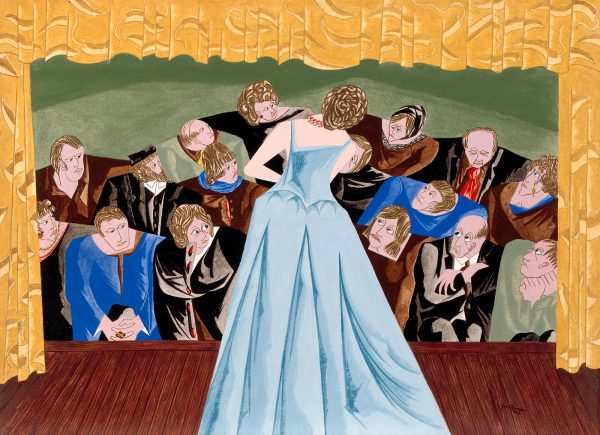
Concert
Lawrence, Jacob
1950
Artwork Information
-
Title:
Concert
-
Artist:
Lawrence, Jacob
-
Artist Bio:
American, 1917–2000
-
Date:
1950
-
Medium:
Gouache and graphite on paper
-
Dimensions:
22 x 30 in.
-
Credit Line:
Wichita Art Museum, Roland P. Murdock Collection
-
Object Number:
M91.51
-
Display:
Not Currently on Display
About the Artwork
Born in Atlantic City, New Jersey in 1917, Jacob Lawrence began his art training in New York City in the 1930s at the College Art Association, the Harlem Art Workshop, and the American Artists School before joining the easel section of the Federal Art Project of the Works Progress Administration in 1938. During World War II, Lawrence served in the United States Coast Guard. His successful painting career would earn Lawrence many exhibitions, awards, commissions, and teaching positions on the East Coast before he moved, in 1971, to the West Coast. In Seattle, where he still lives and paints, Lawrence taught at the University of Washington until his retirement in 1983.
Famous for painting series dealing with such subjects as the Northern migration of Southern African Americans, the civil rights movement, and World War II, as well as for biographical sequences on Harriet Tubman, Frederick Douglass, John Brown, and others, Lawrence used the series format to explore the complexity of the African-American experience. “As a boy in Harlem,” Lawrence recalled, “I heard a lot of talk about black heroes…. I began to do paintings about them, but I found I couldn’t pack everything into one picture. So, I developed the idea of doing works in series.”1
Belonging to an eleven-part series Lawrence painted during a nine-month voluntary hospitalization at the Hillside Hospital, a psychiatric institution in Queens, Concert is unusual for its depiction of an entirely white group of people. Unlike Lawrence’s more historical or biographical series, the Hillside Hospital pictures relate more openly to his personal experiences. According to his doctor at the hospital
“These paintings do not come from his temporary illness. As they always have—and is true for most real artists—the paintings express the healthiest part of his personality, the part that is in close touch with both the inner depths of his own feeling and with the outer world.2”
Lawrence himself characterized the experience positively, recalling, “I gained a lot: The most important thing was that I was able to delve into my personality and nature. … I think it was one of the most important periods of my life.”3
In Concert, a woman in a light blue gown stands on a stage before an audience, her back to the viewer. The angularity of the shapes, the seemingly random shading of figures, the cool blue of the performer’s dress that recedes against the warmer browns and yellows of the stage—all these formal elements combine to flatten out the composition and bring the crowd and the performer together. The artist, and by extension, the viewer, occupies the space behind the performer, as if he, too, were on stage. Lawrence seems to enmesh viewer with artist, concertgoer with singer. Underscoring these confused performative roles is the way the audience members on either side of the singer nervously glance askance at the people on the other side of the theater, and perhaps not at the stage at all.
- Quoted in Grace Glueck, “Sharing Success Pleases Jacob Lawrence,” New York Times, 3 June 1974, 38 (L).
- Aline B. Louchheim, “An Artist Reports on the Troubled Mind,” New York Times Magazine, 15 October 1950, 15. See also Ellen Harkins Wheat, Jacob Lawrence, American Painter, (Seattle and London: University of Washington Press, 1986),
- New York Post, 26 March 1961. Cited in Wheat, 102.